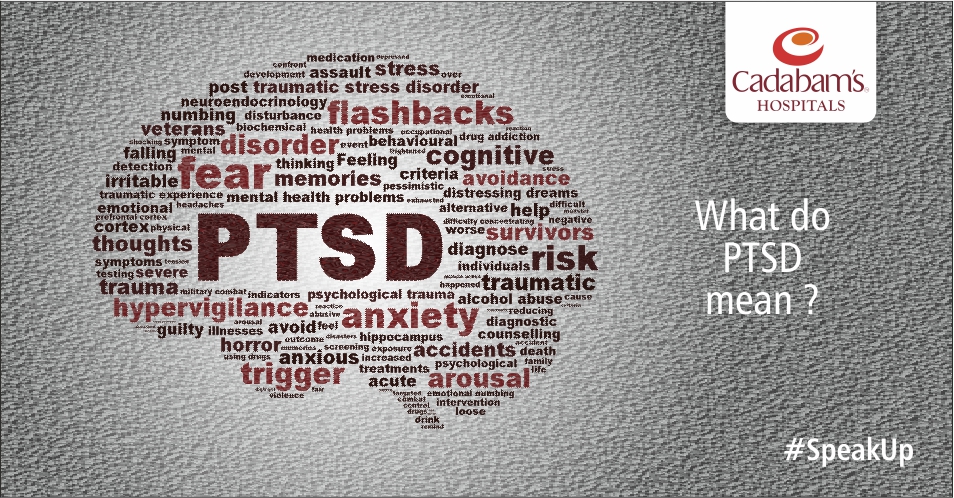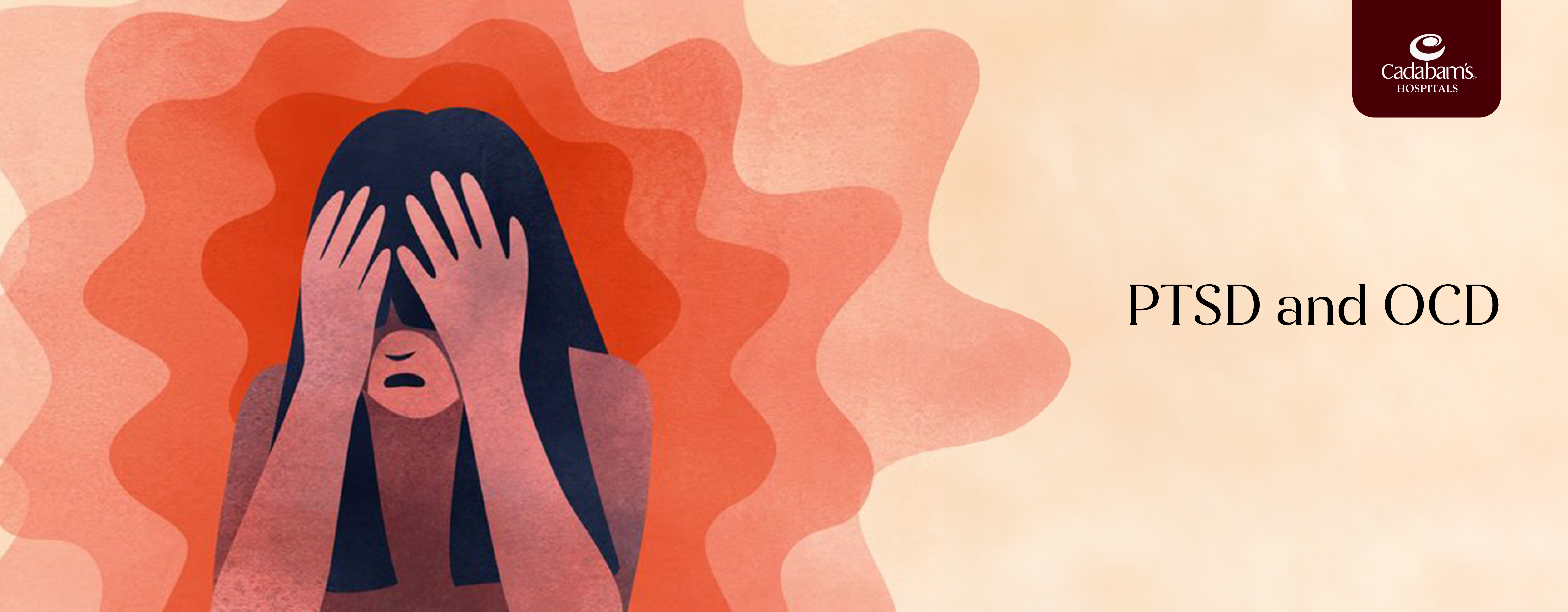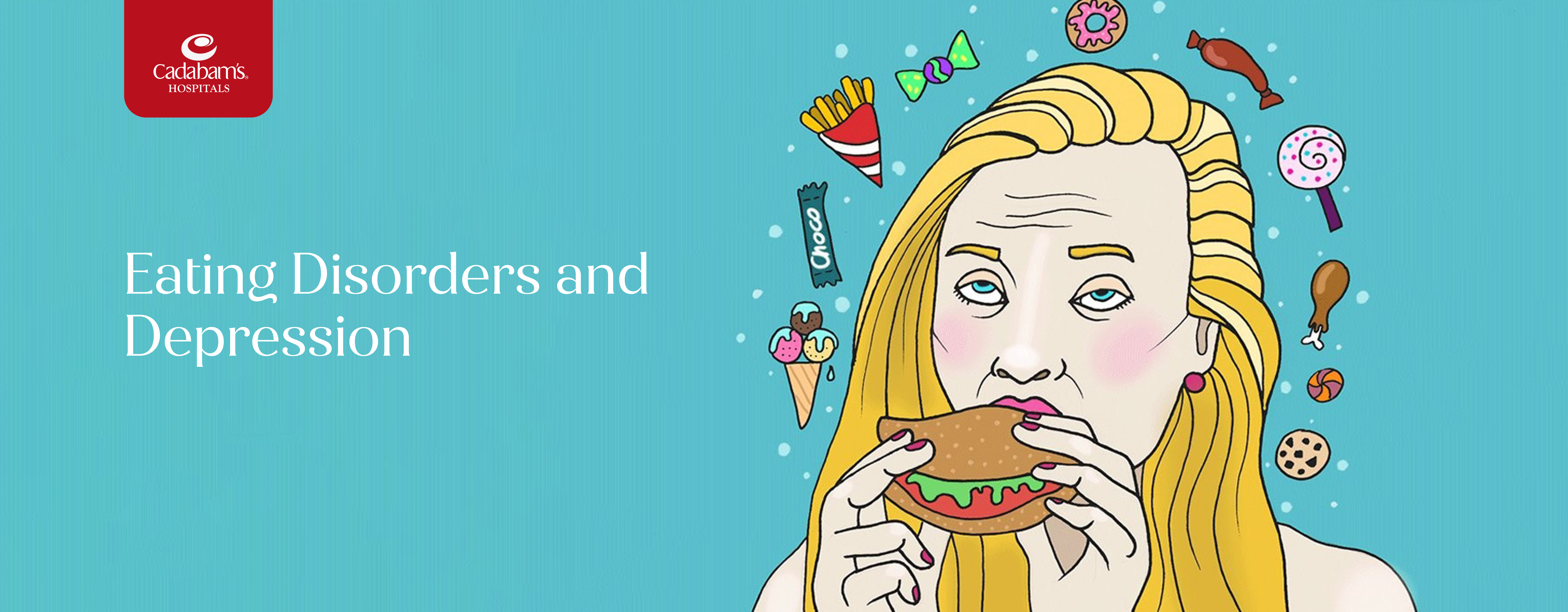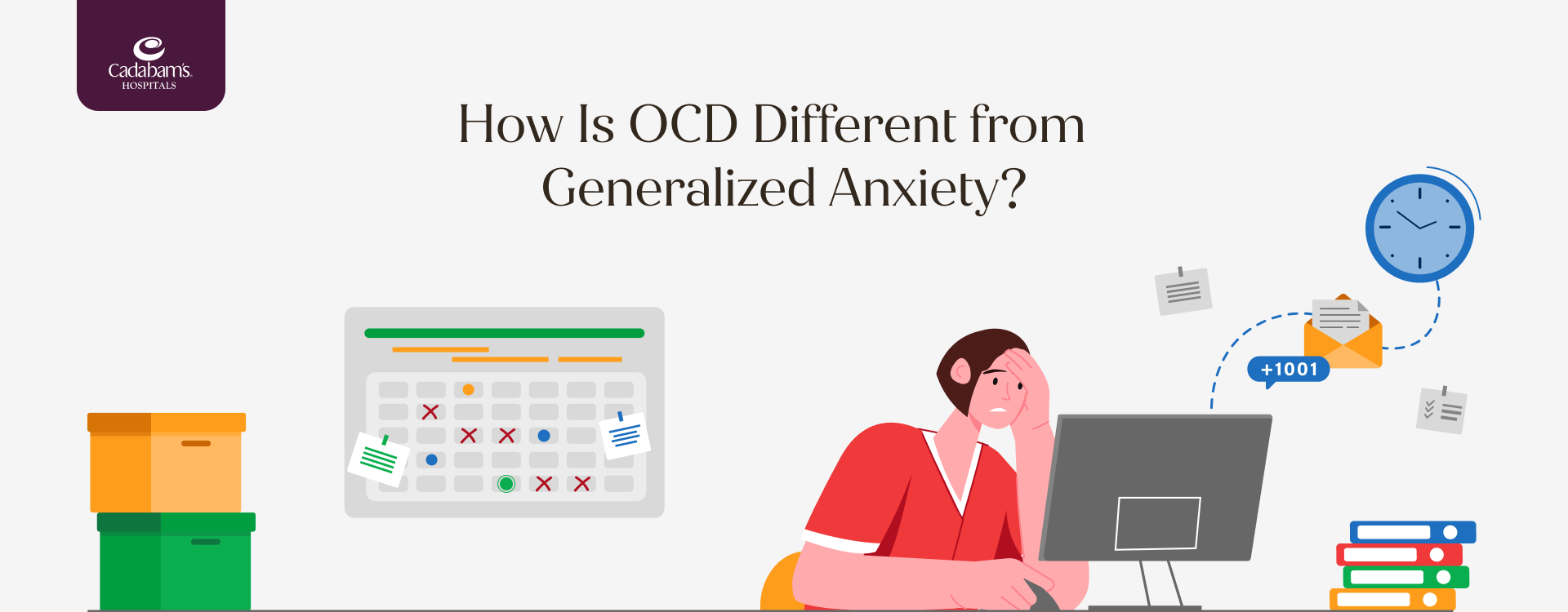Table of Content
Experiencing a traumatic event can be extremely stressful. For some, these events can trigger an unpleasant set of reactions, which can become post-traumatic stress disorder (PTSD).
PTSD is a mental health disorder wherein the person fails to recover from a traumatic event. The possibility of suffering from this disorder depends on the grievousness and frequency of the incident and can be mild in some while being severe in many others. Those suffering from mild PTSD are temporarily unable to cope with difficult situations, while the critically affected people must seek necessary medical attention.
The traumatic events may be a real-life incident or a perceived threat of injury or death and may include:
- Natural calamities like earthquakes, famines, or floods
- Military combat
- Abuse as in childhood neglect, physical assault, or sexual abuse
- Major accidents causing injuries and loss of limbs
The effects of PTSD can be critical. Though seemingly normal among us, PTSD patients sense danger in every situation. The ‘fight or flight response’ is severely altered, causing the affected person to feel stressed or fearful even in the most subtle or harmless situations.
Since PTSD symptoms are increasingly prevalent in war veterans, this emotional disorder has also been labeled “shell shock” or “battle fatigue.” Contrary to the myth that this mental disease affects only the old, mental health specialists maintain that it can affect anyone regardless of age, gender, or race.
Stages of Post-Traumatic Stress Disorder (PTSD)
Many of us may have experienced at least one traumatic event in our lives.
In the US, 70 percent of adults, in their lifetime, experience at least one traumatic event. 20 percent of them develop PTSD. Also, in a given year, around 8 million Americans have PTSD. The global picture is no better. In fact, in countries where mental health remains a secondary thought and there’s a lack of adequate mental healthcare infrastructure, some experts believe the number of people struggling with PTSD could be higher. Those diagnosed with this disorder go through several stages before getting treated for it. The four stages of development of PTSD include:
1. Impact Stage
This is a stage that people undergo almost immediately after they have experienced the trauma. It may be difficult for some people to cope with the aftermath of the incident; they show signs of anxiety, hypervigilance, and possibly shame.
2. Denial Stage
Some people prefer to be in a state of denial of their problem and its associated symptoms, even while seeking recovery. While they suffer from recurring memories of the incident or experience strong feelings associated with it, they try to suppress their emotions. Many also turn to alcohol or drugs to numb their feelings at this stage.
3. Short-term Recovery Stage
This is the stage where patients attempt self-recovery by discussing their problems with their friends and loved ones. While PTSD-affected patients try to adjust to their daily routines, looking for normalcy in their lives, some of them turn overly cynical and distrustful of everything and everyone around them.
4. Long-term Recovery Stage
This is the stage that begets immediate medical attention as the patient struggles with recurring nightmares and complains of uncontrolled anxiety problems. These negative symptoms can have a deteriorating effect on both the body and mind, thus necessitating both therapeutic and medicinal treatment methods.
Symptoms of Post-Traumatic Stress Disorder
For some, the symptoms of post-traumatic stress disorder are not visible until many years after the traumatic incident. However, some may be seriously affected by violence and bloodbaths synonymous with war and terrorism or persistent domestic abuse and find it difficult to get rid of the consequent pain and turmoil within.
Psychologists classify PTSD into mainly four main types including:
1. Intrusive memories
- Some of the most common signs of intrusive memories include:
- Suffering from repetitive and unwanted remembrances of the traumatic incident
- Flashbacks of the traumatic incident forcing the affected to relieve the pain and emotional injury suffered
- Struggling due to upsetting dreams or nightmares about the traumatic incident
- Chronic emotional distress and terrifying physical reactions including self-harming tendencies in response to the traumatic event.
2. Avoidance
This is a kind of behavior in which the affected individual avoids:
- Talking or thinking about the traumatic incident
- Activities, places, or situations that remind them of the event
3. Negative thinking
Sometimes the impact of the traumatic incident may be such that it may usher in negative thoughts about oneself and the people around. This may trigger symptoms like:
- Negative outlook towards the society around
- Feeling hopeless about the future
- Incapacitated memory rendering it difficult to remember important aspects of the traumatic event
- Difficulty in forming and maintaining close relationships
- Detachment from friends and loved ones
- Disinterest in daily activities
- Emotional numbness
4. Changes in physical and emotional reactions
There are visible changes in physical and emotional reactions like:
- Feeling frightened on trivial issues or getting easily startled
- Being on guard always
- Self-destructive tendency
- Experiencing trouble in sleeping
- Inability to concentrate or focus
- Sudden angry outbursts or feeling angry for nothing
- An unwarranted feeling of guilt or shame
Recognizing PTSD Symptoms in Children (Ages 6-10)
Traumatic experiences can leave a lasting impact on the minds of young children aged 6-10. Some common signs and symptoms to watch for include:
- Re-enacting the traumatic incident or events associated with it.
- Experiencing intense fear due to recurring nightmares unrelated to their traumatic experiences.
- Sudden behavioral changes, such as increased aggression or withdrawal.
- Difficulty concentrating and a decline in school performance.
- Physical complaints like headaches or stomach aches with no apparent medical cause.
The Impact of Unrecognized PTSD on Daily Life and Mental Health
While most are familiar with the textbook definition of PTSD, its true impact on everyday life, social interactions, and work relationships often remains unnoticed. Even the strains of daily stress can trigger mild symptoms, and the sudden resurgence of memories can evoke strong, unexpected reactions. It's a reality many don't fully grasp.
Mental health experts emphasize that untreated PTSD can lead to additional emotional struggles, such as anxiety, depression, and substance abuse. These are complex battles that can intensify the distress. For some individuals, unable to cope with the weight of their traumatic experiences, alcohol or drugs may seem like a refuge—a temporary escape from the haunting memories. The ripple effects of unaddressed PTSD can be profound.
Risk Factors for Developing PTSD
There is no specific age group or race more susceptible to PTSD than others. Numerous risk factors come into play for the possible development of the disorder. These include:
- Women are at an increased risk of suffering from PTSD
- Children affected by traumatic events when young
- Exposure to horrifying or traumatic incidents in defense-related jobs
- Constant feelings of hopelessness and fear due to domestic abuse
- Persistent experience of trauma due to similar recurring incidents
- Lack of social support or tendency to live in isolation
- Experiencing pain due to the loss of a loved one in an accident or gruesome incident
- Having a history of emotional disorder or substance abuse
Effective Treatment Options for PTSD
Psychologists decide on the right treatment for PTSD depending on the grievousness of the patient’s symptoms. Mental health specialists recommend talk therapy or medicines or a combination of both. The different ways to treat PTSD include:
Talk therapy
This involves the psychologists discussing the symptoms of the disorder with their patients, identifying the risk factors that trigger their symptoms, the frequency of the signs that they are afflicted with, and advising their patients, ways to deal with them. Depending on the seriousness of the disorder. There are multiple different types of talk therapy recommended by professionals based on the severity of the disorder.
Medications
This is used when patients complain and show suicidal tendencies to get rid of the recurring pain and trauma stemming from their experiences in the past. In many cases, doctors also prescribe antidepressants to help their patients deal with their misery, feelings of desolation and dejection, anger, and numbness inside. Other medicines enable them to sleep sans the terrifying impact of nightmares.
Strategies for Coping with Post-Traumatic Stress Disorder (PTSD)
Coping with post-traumatic stress disorder (PTSD) can be challenging, but there are effective strategies to help individuals regain control of their lives and well-being.
- Seek Professional Help: The guidance of a mental health expert specializing in trauma and PTSD can be invaluable. Therapy or counseling sessions can provide a safe space to address and manage symptoms.
- Medication: Consult a psychiatrist for medication options to alleviate symptoms, particularly when therapy alone may not be sufficient.
- Support Groups: Joining PTSD support groups allows individuals to connect with others who have similar experiences, fostering a sense of community and understanding.
- Self-Care: Prioritize self-care activities such as regular exercise, meditation, and relaxation techniques to manage stress and anxiety..
- Maintain a Routine: Establishing a structured daily routine can provide stability and predictability, helping to reduce feelings of chaos and unpredictability.
- Avoid Triggers: Identify and avoid triggers that exacerbate symptoms, whenever possible.
- Mindfulness and Grounding Techniques: Practicing mindfulness and grounding exercises can be effective in managing anxiety and dealing with distressing flashbacks.
- Gradual Exposure: Under professional guidance, consider gradual exposure therapy to confront and desensitize to triggers, helping to reduce their emotional impact.
These strategies empower individuals to heal and improve their quality of life in the face of PTSD.
Selecting Cadabam’s Hospitals: Your Path to Medical Assistance
Ignoring the symptoms of PTSD can exacerbate the problem. At Cadabam’s Hospitals, we have a multi-specialty team of mental health professionals who strive to ensure that no emotional disorder goes untreated. PTSD patients are treated using the most novel therapies and practices to help them recover and reclaim their lives faster. With customized treatment options and round-the-clock care, our experts ensure you receive the best treatment. Our overall approach keeps ‘care for you’ at the center, ensuring all your needs, requirements, and problems are met with complete adequacy.
With over 30 years of experience, we've assisted countless patients in overcoming their PTSD. We are committed to achieving the same positive outcome for you or your loved one.
If you or someone you know is experiencing PTSD symptoms, please don't hesitate to reach out to us today. You can contact us at +919741476476.
Frequently Asked Questions
1. What are the common causes of PTSD?
PTSD can be caused by a wide range of traumatic experiences, including combat exposure, sexual assault, accidents, natural disasters, and the sudden loss of a loved one.
2. What are the typical symptoms of PTSD?
Symptoms of PTSD may include flashbacks, nightmares, severe anxiety, irritability, avoidance of reminders of the trauma, and emotional numbness.
3. Can PTSD Lead to Suicidal Tendencies?
Yes, PTSD Can Lead to Suicidal Thoughts.
Traumatic experiences trigger haunting memories, and some individuals may contemplate suicide. When overwhelmed, they may:
- Reach out to loved ones.
- Seek help from spiritual leaders.
- Call a suicide helpline.
- Consult mental health professionals.
How Cadabam's Help you for Addiction?
- 410+ Professional Consultants
- 1,00,00+ Happy Faces
- 120+ Currently Seeking Treatments











